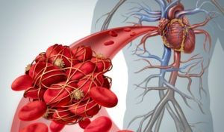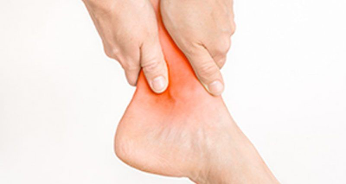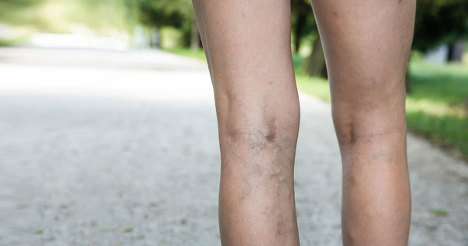When left untreated, varicose veins can develop into more severe conditions such as Chronic Venous Insufficiency, which occurs when the valves in the legs are unable to perform their function. This leads to a pooling of blood in the legs. CVI can lead to further more serious complications, these include: superficial vein thrombosis, deep-vein thrombosis, leg ulcers, and spontaneous bleeding.
Vein Thrombosis
Superficial Vein Thrombosis
Superficial Vein Thrombosis is inflammation in the superficial veins due to a blood clot under the surface of your skin; the skin on top of the veins can appear red and be painful to the touch. To

prevent the development of SVT you should try to keep as active as possible and avoid long periods of inactivity.
Deep Vein Thrombosis
Deep Vein Thrombosis is a more serious condition as it develops when a blood clot forms in your deep veins. Common symptoms and warning signs of DVT include: pain, swelling, redness, and warmth. It should be noted that DVT can also occur without any signs or symptoms. Treatment of this condition includes taking blood thinner medication, or thrombolytic drugs. A way to prevent DVT if you are at risk for developing deep vein blood clots is to wear compression stockings, as they can lower inflammation in the lower legs. As with Superficial Vein Thrombosis it is important to maintain an active lifestyle to prevent the development of the condition.
Leg Ulcers
Leg ulcers may also develop if Varicose Veins are left untreated. When the legs are not properly circulating your blood, the blood can begin to collect which places pressure on the surface and can potentially break through your skin barrier. When the skin breaks as a result of the pressure, a sore will begin to form. If you notice a red sore developing on your lower leg it is a good indicator that you may have a venous ulcer. Other symptoms include dark patches of skin on the lower legs, and swelling as well as itchiness. The best methods to prevent developing an ulcer are to maintain healthy habits. This includes: not smoking, keeping a healthy weight, staying active, wearing compression stockings, and to not stay seated or standing for long periods of time.

Spontaneous Bleeding
Spontaneous Bleeding can occur as a side effect of having Varicose Veins. The bleeding mainly occurs in the smaller veins which are usually located in the lower parts of the leg. The reason that the bleeding occurs is due to the elevated pressure in the veins as a result of the pooling which is caused by CVI. The pressure is often too much for the veins to handle, which causes them to burst. In a situation when spontaneous bleeding has occurred in varicose veins it is extremely important to elevate the leg (higher than your heart) and also to apply pressure to the area of the bleed.
Contact us!
At Canada Vein Clinic s we specialize in the treatment of varicose veins. We offer numerous treatments for this condition and help to find the best treatment for you. Book a consultation to find out more information! Give us a call today at 1-888-876-8346, or email us at askdoctor@canadaveinclinics.ca.


